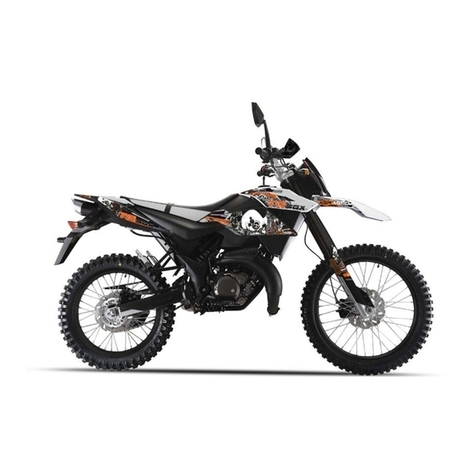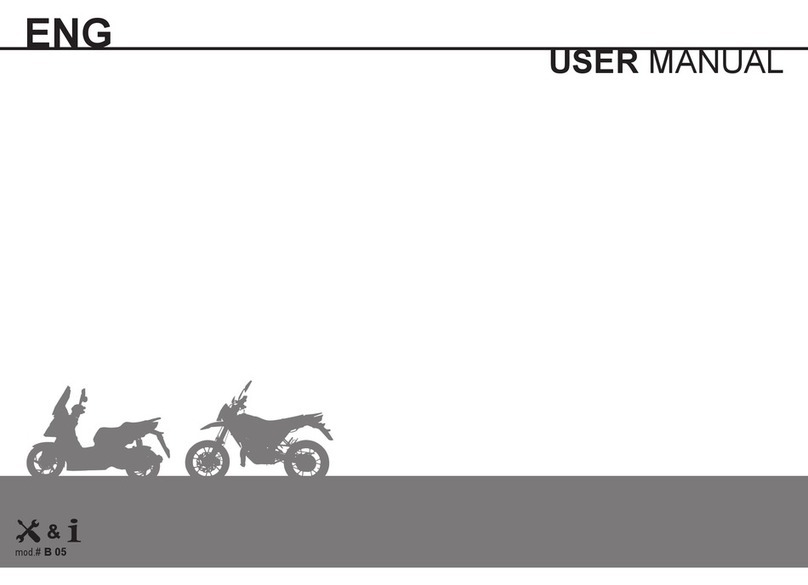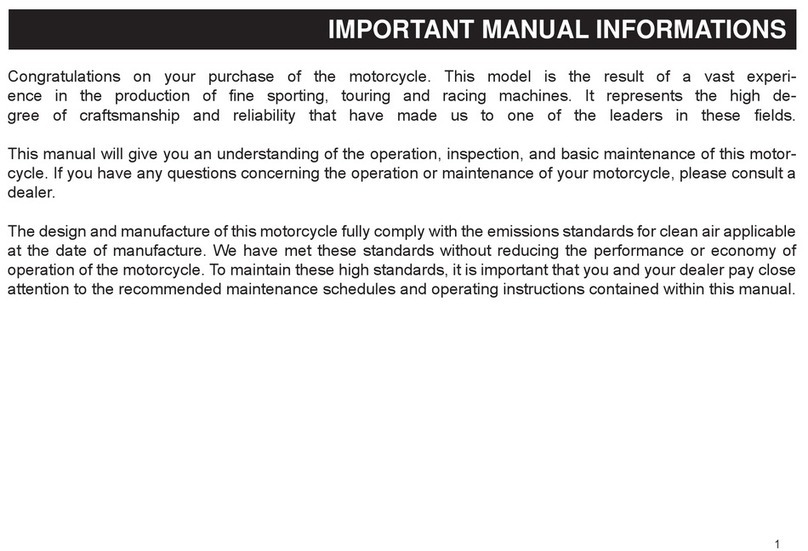7
SAFETY INFORMATION
from unexpected accidents.
• Never wear loose clothes, otherwise
they could catch on the control le-
vers or wheels and cause injury or
an accident.
• Never touch the engine or exhaust
system during or after operation.
They become very hot and can
cause burns. Always wear protective
clothing that cover your legs, ankles,
and feet.
Modications
Modications made to this vehicle
which are not approved by the maker,
or the removal of original equipment,
may make the vehicle unsafe for use
and can cause severe personal injury.
Modications may also make your ve-
hicle illegal to use.
Loading and accessories
Adding accessories or cargo to your
vehicle will cause a different weight
distribution of the vehicle and inuence
the steering & balance.
It may cause
the possibility of an accident.
Be extremely cautious and follow the
limitation below when equipped with
accessories / cargo. Below are some
guidelines to follow if loading cargo or
adding accessories to your vehicle.
Loading
The total weight of the operator, pas-
senger (when allowed), accessories
and cargo must not exceed the maxi-
mum load limit.
Maximum load
(not include the vehicle):
150kg
When loading within this weight limit,
keep following points in mind:
• Cargo and accessory weight should
be kept as low and close to the ve-
hicle as possible. Make sure to dis-
tribute the weight as evenly as pos-
sible on both sides of the vehicle to
minimize imbalance or instability.
• Make sure that accessories and car-
go are securely attached to vehicle
before riding
• Never attach any large or heavy
items to the handlebar, front fork, or
front fender. Such items can create
unstable handling or a slow steering
response.
Accessorries
Genuine accessories have been speci-
cally designed for use on this vehicle.
If need, please contact with dealer for
detail. Since the maker can not test all
other accessories, you are personally
responble for the proper selection, in-
stallation and use of non OEM acces-
sories.
Keep the following guidelines in mind,
when mounting accessories.
• Never install accessories or carry
cargo that would inuence on the
ground clearance, limit suspension
travel, steering, or obscure lights or
turning lights, reectors.
• Accessories on the handle bar/front
suspension area will cause bad inu-
ence on steering the vehicle. if you































